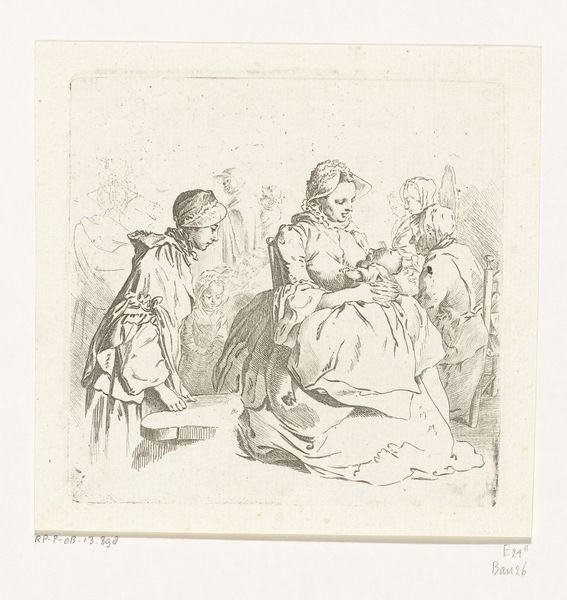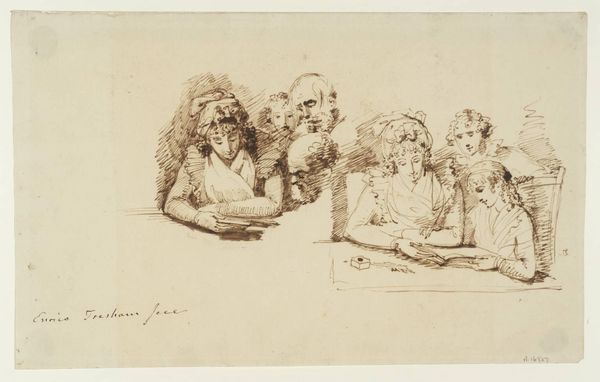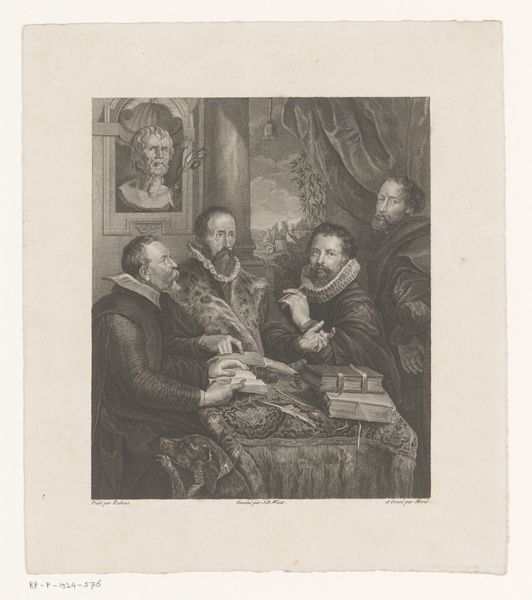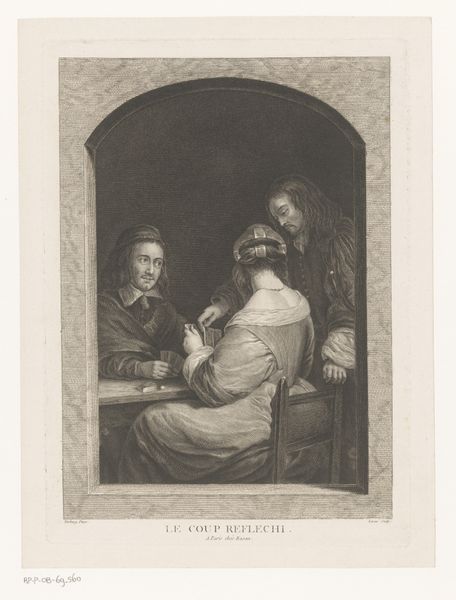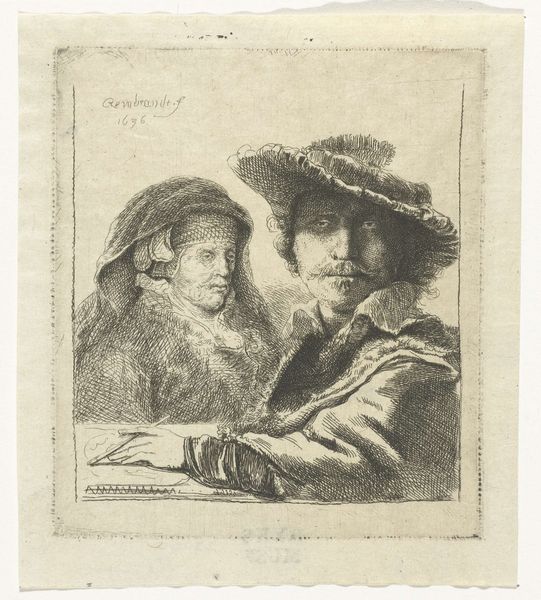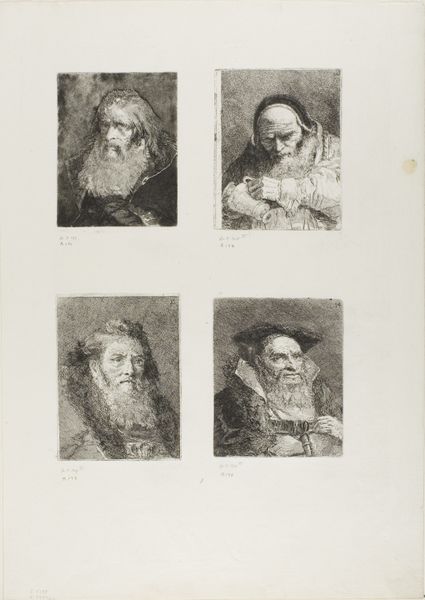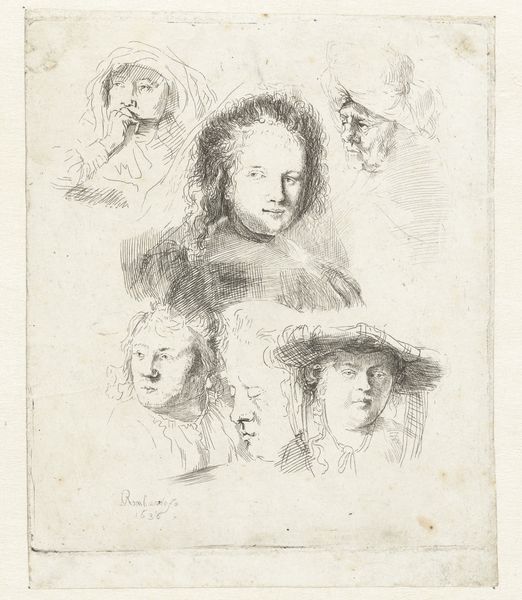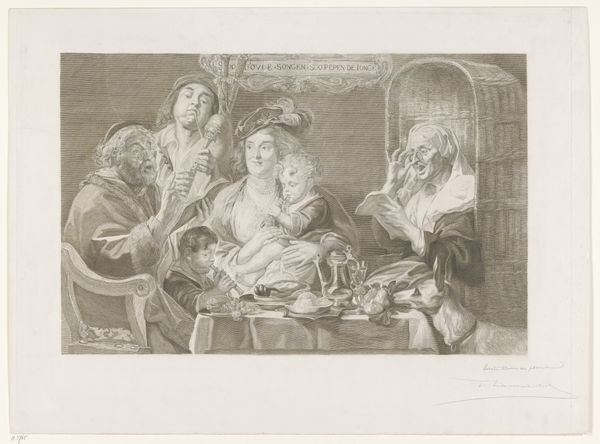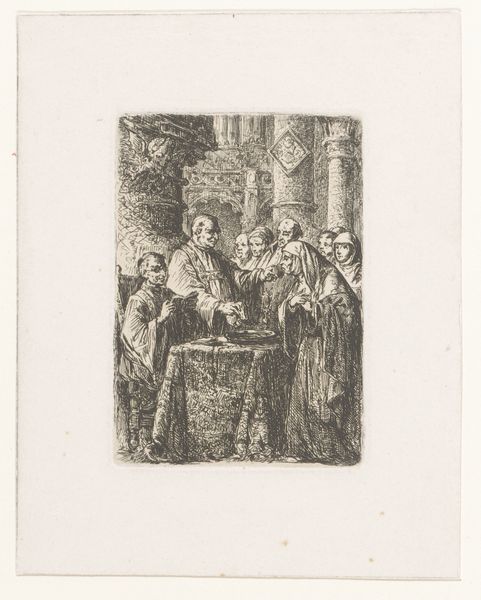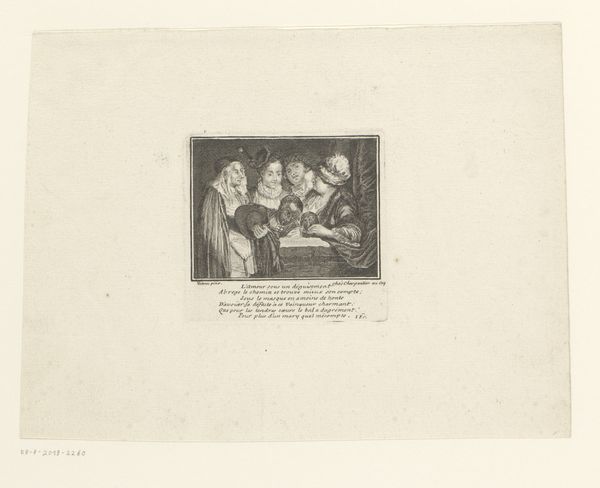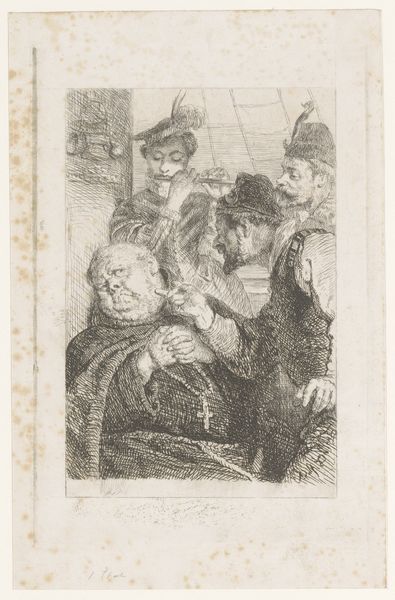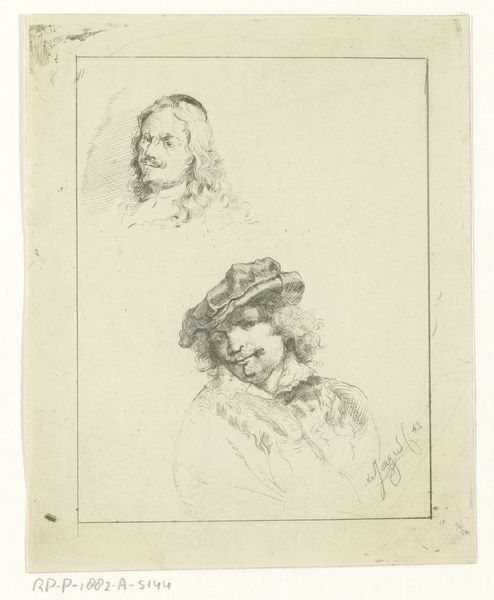
Dimensions: height 125 mm, width 171 mm
Copyright: Rijks Museum: Open Domain
Editor: Here we have Rembrandt’s "Self-Portrait with Saskia", a small etching from 1794. It has an intimate feel; you get a sense of peering into Rembrandt’s personal life. What stands out to you about this piece? Curator: It’s fascinating how Rembrandt constructs his public image through these self-portraits, particularly within the context of the 17th-century Dutch art market. Printmaking allowed for wider distribution, creating a form of celebrity, almost like early modern social media. What do you make of his choice to include Saskia in this depiction? Editor: I see it as an attempt to portray himself as a successful and content family man, perhaps? Although I find the two other figures intriguing because they are not identified! Curator: Exactly! Consider the rising merchant class in the Netherlands at the time. The art market shifted from aristocratic patronage to a broader public. Self-portraits like this, subtly advertising his skills while projecting an air of bourgeois respectability, played into that shift. The additional figures could represent societal archetypes or even potential clients, contributing to a constructed image carefully designed for public consumption. How do you think its small size affects our experience of it today? Editor: That’s a good point – the scale creates a sense of accessibility now, almost like a snapshot. Thinking about it as a carefully crafted public image for the rising merchant class adds so much depth to the piece! Curator: Indeed. Looking closely at these pieces tells us so much about both the artist and the society that supported them. Editor: I definitely see this work in a new light, now. Thank you!
Comments
No comments
Be the first to comment and join the conversation on the ultimate creative platform.
